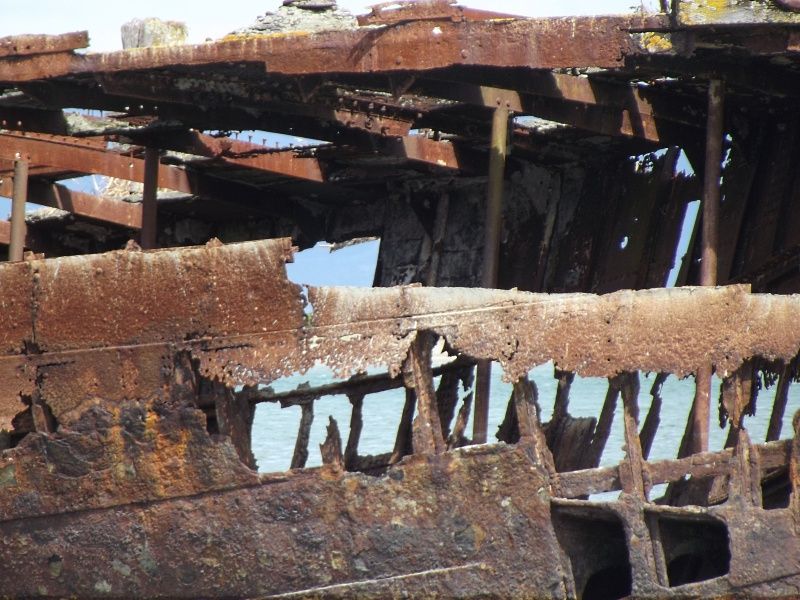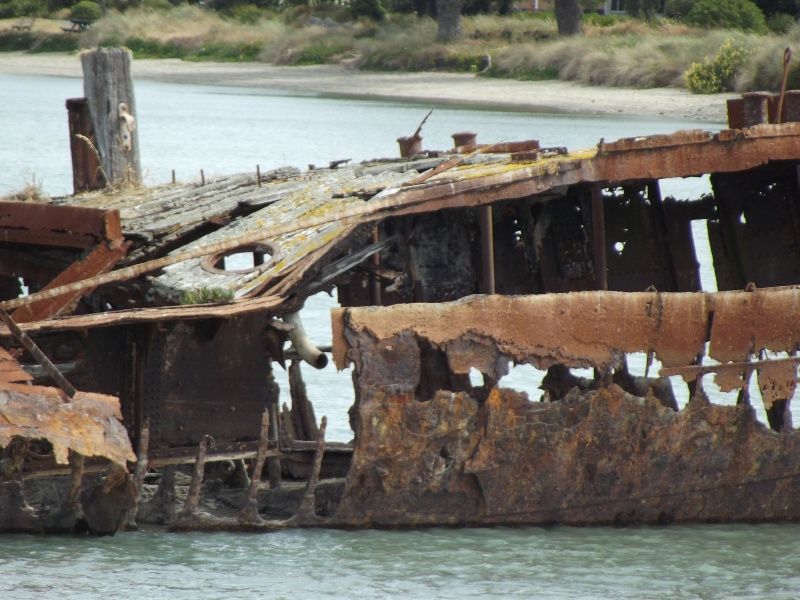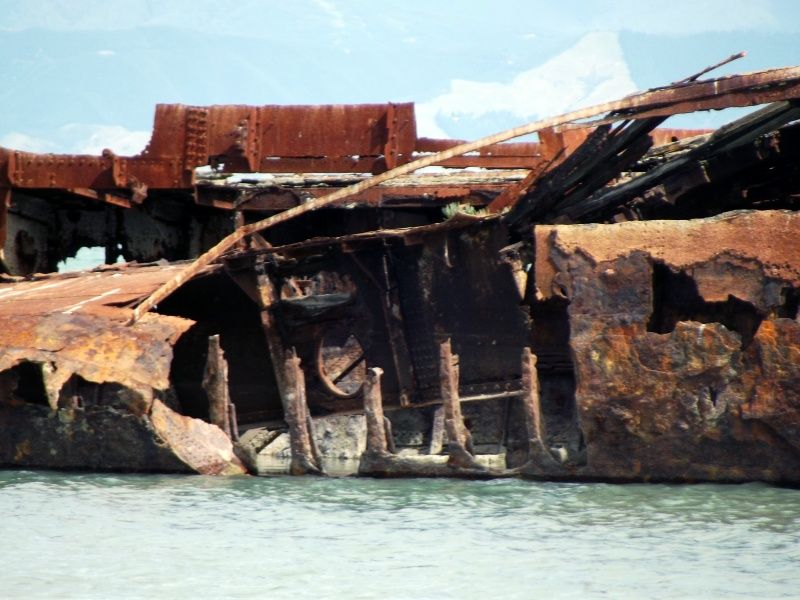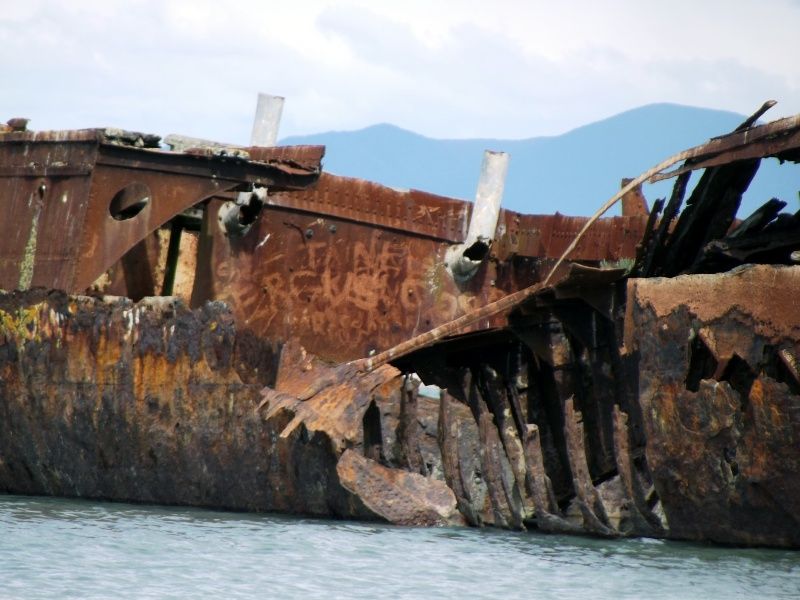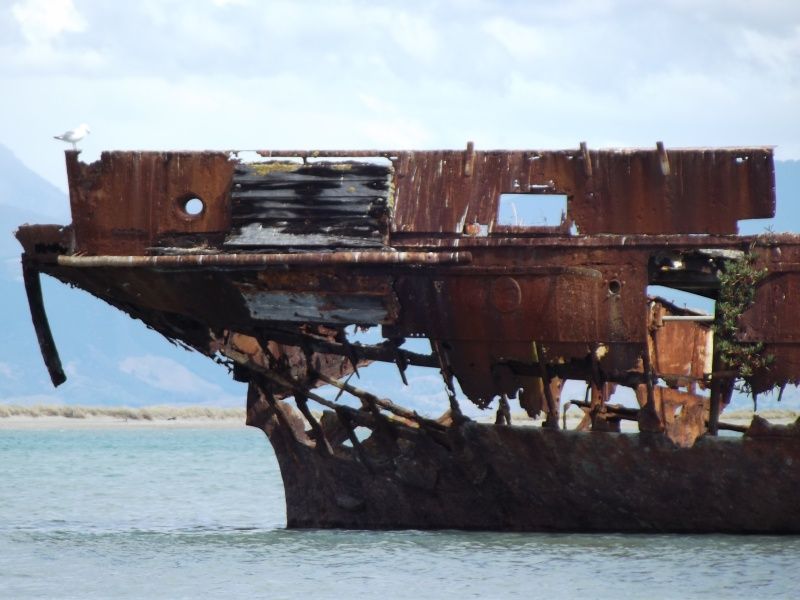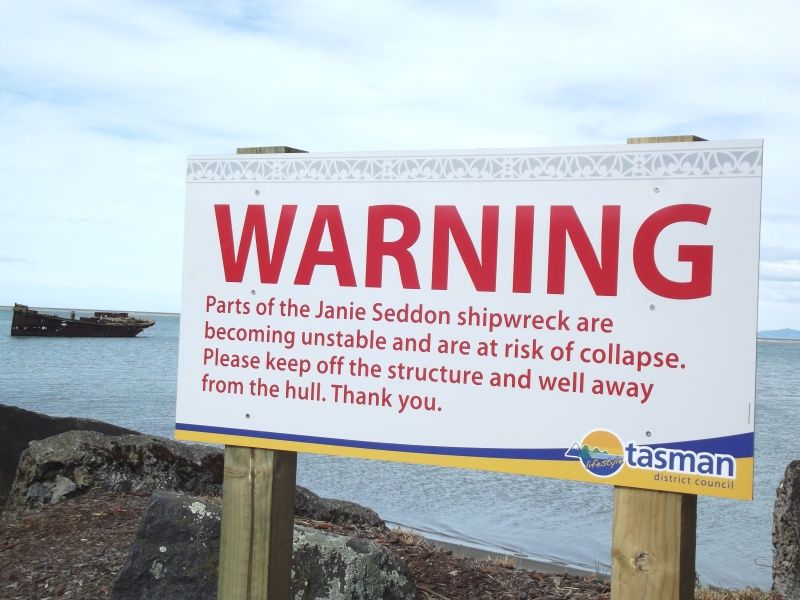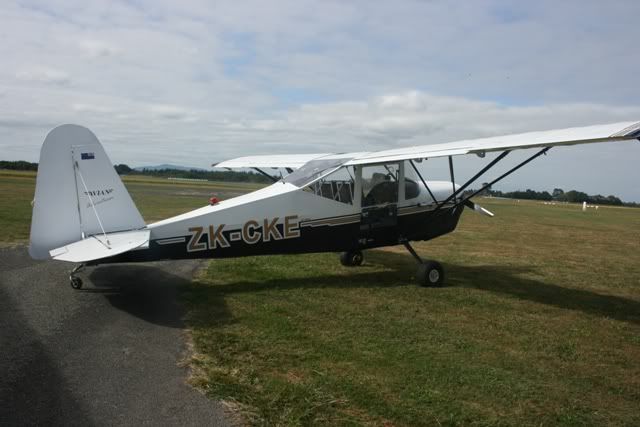Post by nuuumannn on Dec 8, 2014 23:16:54 GMT 12
For those of you who are not aware of this ship, the Twin Screw Steamer Janie Seddon sits derelict off the Motueka foreshore and has been a feature of the local seascape for years. Her significance to the region is that she was the first fishing boat purchased by the Talley's fishing group. After sinking at her moorings, she was left to rot at her current location. Aside from this local connection, the Janie Seddon was originally bought by the New Zealand government as a military vessel. She is the last surviving New Zealand military ship to have served in both World Wars.
The Janie Seddon today.
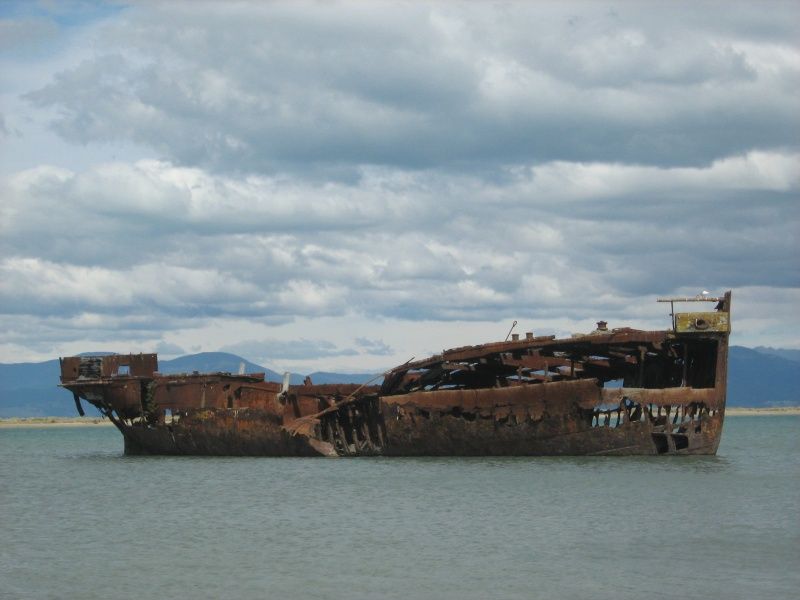
Owing to the fear of invasion by the Russians in the late 1800s - the 1886 Tarawera eruption was heard and felt in Auckland and the Russian sloop Vyestnik, which was visiting at the time, was suspected of shelling coastal towns - the government requested vessels for the laying of mines in harbours. These were called submarine mining vessels and the Janie Seddon was the second such ship purchased. Ordered in October 1900, the ship was originally to be named the Janie Spotswood. Constructed by Fleming & Fergusson Ltd at Paisley, Scotland, she was renamed Janie Seddon after Prime Minister Richard Seddon's daughter on 29 November 1900. Built of steel and powered by a single 320 hp steam engine driving two shafts, the Janie Seddon was capable of 7 kts. She was 90 feet long and 18 feet wide (27.4 m x 5.5 m) with a grt of 126t and 44t net.
The Janie Seddon undergoing trials off the coast of Scotland, 1901.
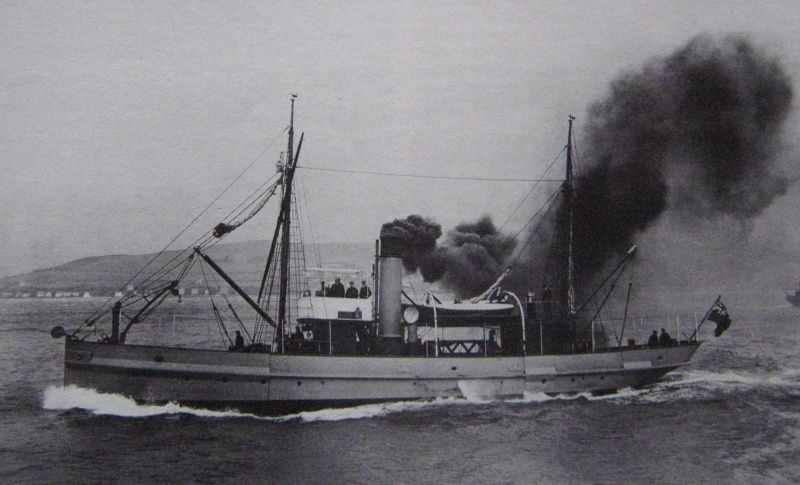
Completed in September 1901, she sailed for New Zealand in company with near identical sister Lady Roberts via the Mediterranean through the Suez canal and the Indian Ocean, arriving in Wellington on 16 January 1902. While Lady Roberts sailed for Auckland, Janie Seddon remained in Wellington at Shelley Bay and was operated by the Engineers Corps of the New Zealand Army, becoming the Royal NZ Engineers in October 1902. With the end of mine laying in 1907 (for the time being), the ship found itself without occupation, but remained in government service with other departments until the outbreak of the Great War, when she was offered to the NZ Division of the Royal Navy. This offer was declined, probably owing to unserviceability as the ship suffered boiler trouble owing to faulty manufacture and had been laid up for maintenance at different times throughout the years leading up to 1914. During the Great War, Janie Seddon served as a harbour examination vessel in Wellington, spending some 45 years there in total. In June 1915, she was sent to Cape Farewell to search for the missing scow Southern Isle and its crew of five, stopping in Nelson and Tarakohe. She also assested the cable ship Iris, which had ran aground on rocks in Worser Bay in April 1918. It is believed that she was used in her original role as a mine layer in Wellington during the war.
Taken in Wellington harbour, date unknown.
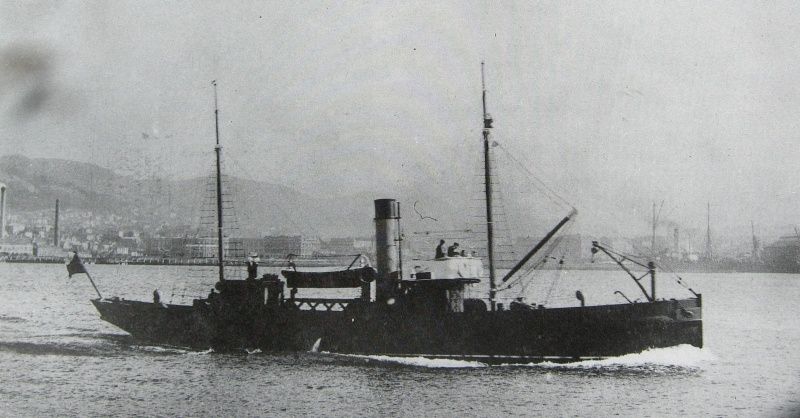
In 1922 she was again offered to the NZ Division and again was turned down, but was sold in 1936, being bought by Yougoslav immigrant Peter Talijancich, later changing his name to Ivan Talley, for use as a fishing trawler. Owing to her short range, Janie Seddon proved unsuitable for deep sea fishing; fortuitously the Naval (Shipping) Control Service was formed on 2 September 1939 and she was requisitioned on that date for duties as an examination vessel. These were nominally manned by both Harbour Board and RNVR staff, with a crew of around 8 to 12 persons. Transferred to naval use on 20 December 1939, her cost was only 65 pounds; she was undergoing a refit at the time. During the war Janie Seddon was not armed, although personnel carried a Bren gun aboard for firing warning shots across the bows of errant vessels. When not on examination duty, she carried out gunnery target towing duties and served as a liberty boat for the naval base at Shelly Bay.
The display board on the Motueka Harbour foreshore gives a little information about the wreck.
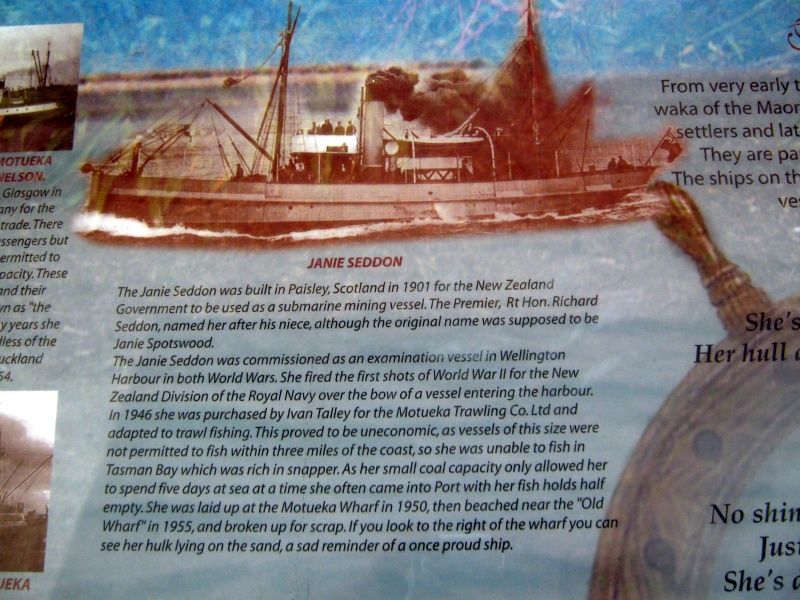
Note the passage regarding the Janie Seddon firing the first shots of WW2; obviously this is incorrect as she was not armed. The incident in particular took place on 3 September 1939 at 9:45 am when the British refrigerated cargo ship City of Delhi did not stop after being signalled to do so by the Janie Seddon. In accordance with standard practice, the shore battery at Fort Dorset was instructed to fire warning shots; its 6 inch gun fired two rounds, one of which was well wide, the other quite close to the ship, which had the desired effect and she hove to alongside the examination ship. The shots were later claimed to be the first fired by a British service during WW2, although war had yet to be declared on the other side of the world. The penalty for not stopping for an examination vessel was for the ship's operator to pay for the rounds expended in warning the ship to stop; in this case, the City of Delhi's were charged 40 pounds per 6 inch round!
The wreck lies on the mud flat a short distance from the shore and is accessible at low tide. Photo taken from the remains of the Motueka wharf.
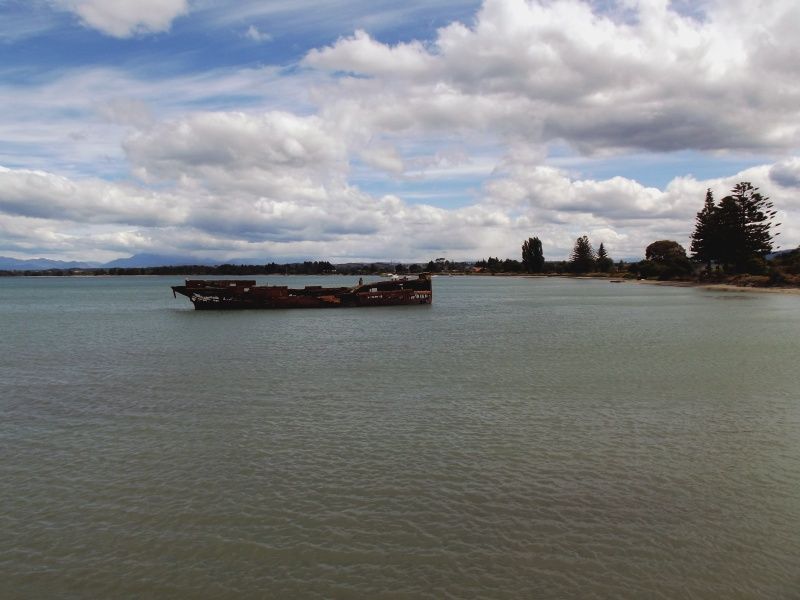
With the situation in the Pacific as it was in 1944, the government examination vessels were withdrawn from 10 September that year, although Janie Seddon remained in use by the navy. Sold to the Motueka Trawling Co Ltd in December 1946, she was again operated by Talley's in 1947 and again proved unsuited as a fishing vessel owing to her carriage of only 5 days steaming worth of coal. She remained in service for three years before being laid up in Nelson, then returned to Motueka harbour, where she was holed and sank at her moorings on 23 April 1953. Over the next two years she was stripped of fittings until all that remained was her hull.
General views of the wreck.
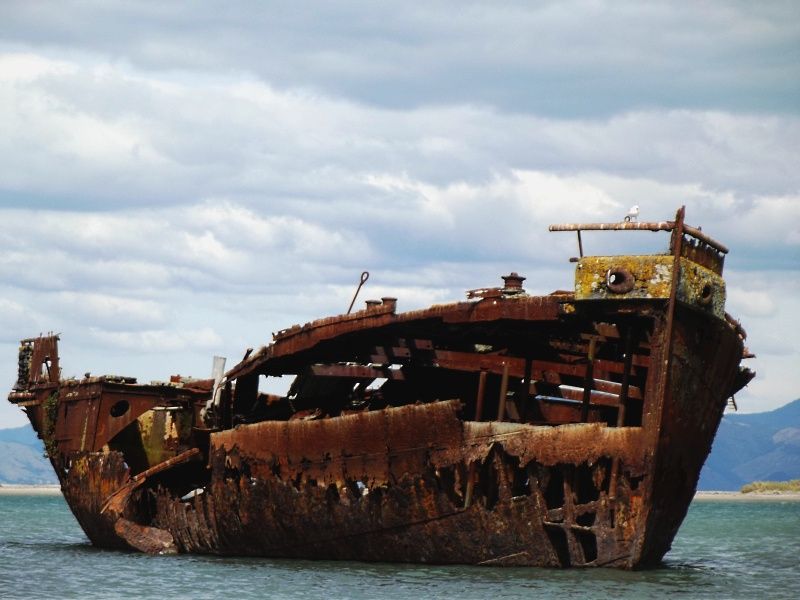
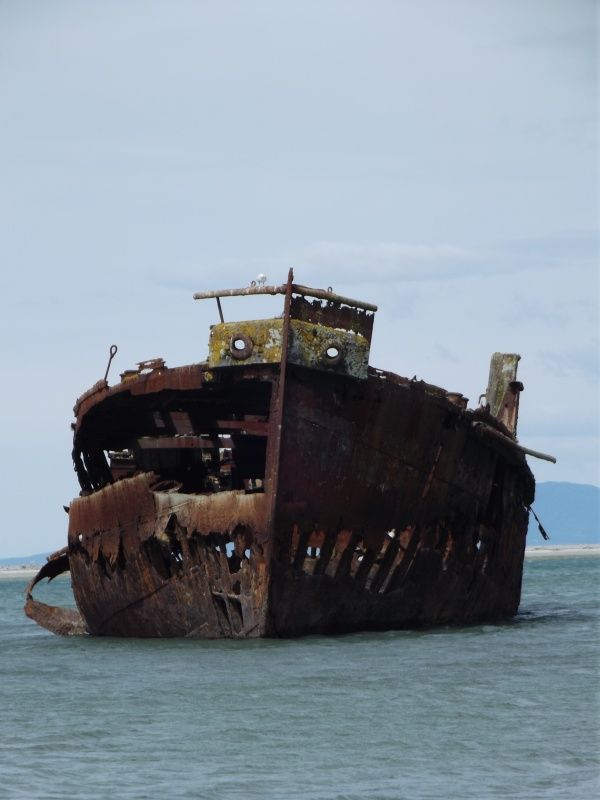

More on the Janie Seddon to come.
The Janie Seddon today.

Owing to the fear of invasion by the Russians in the late 1800s - the 1886 Tarawera eruption was heard and felt in Auckland and the Russian sloop Vyestnik, which was visiting at the time, was suspected of shelling coastal towns - the government requested vessels for the laying of mines in harbours. These were called submarine mining vessels and the Janie Seddon was the second such ship purchased. Ordered in October 1900, the ship was originally to be named the Janie Spotswood. Constructed by Fleming & Fergusson Ltd at Paisley, Scotland, she was renamed Janie Seddon after Prime Minister Richard Seddon's daughter on 29 November 1900. Built of steel and powered by a single 320 hp steam engine driving two shafts, the Janie Seddon was capable of 7 kts. She was 90 feet long and 18 feet wide (27.4 m x 5.5 m) with a grt of 126t and 44t net.
The Janie Seddon undergoing trials off the coast of Scotland, 1901.

Completed in September 1901, she sailed for New Zealand in company with near identical sister Lady Roberts via the Mediterranean through the Suez canal and the Indian Ocean, arriving in Wellington on 16 January 1902. While Lady Roberts sailed for Auckland, Janie Seddon remained in Wellington at Shelley Bay and was operated by the Engineers Corps of the New Zealand Army, becoming the Royal NZ Engineers in October 1902. With the end of mine laying in 1907 (for the time being), the ship found itself without occupation, but remained in government service with other departments until the outbreak of the Great War, when she was offered to the NZ Division of the Royal Navy. This offer was declined, probably owing to unserviceability as the ship suffered boiler trouble owing to faulty manufacture and had been laid up for maintenance at different times throughout the years leading up to 1914. During the Great War, Janie Seddon served as a harbour examination vessel in Wellington, spending some 45 years there in total. In June 1915, she was sent to Cape Farewell to search for the missing scow Southern Isle and its crew of five, stopping in Nelson and Tarakohe. She also assested the cable ship Iris, which had ran aground on rocks in Worser Bay in April 1918. It is believed that she was used in her original role as a mine layer in Wellington during the war.
Taken in Wellington harbour, date unknown.

In 1922 she was again offered to the NZ Division and again was turned down, but was sold in 1936, being bought by Yougoslav immigrant Peter Talijancich, later changing his name to Ivan Talley, for use as a fishing trawler. Owing to her short range, Janie Seddon proved unsuitable for deep sea fishing; fortuitously the Naval (Shipping) Control Service was formed on 2 September 1939 and she was requisitioned on that date for duties as an examination vessel. These were nominally manned by both Harbour Board and RNVR staff, with a crew of around 8 to 12 persons. Transferred to naval use on 20 December 1939, her cost was only 65 pounds; she was undergoing a refit at the time. During the war Janie Seddon was not armed, although personnel carried a Bren gun aboard for firing warning shots across the bows of errant vessels. When not on examination duty, she carried out gunnery target towing duties and served as a liberty boat for the naval base at Shelly Bay.
The display board on the Motueka Harbour foreshore gives a little information about the wreck.

Note the passage regarding the Janie Seddon firing the first shots of WW2; obviously this is incorrect as she was not armed. The incident in particular took place on 3 September 1939 at 9:45 am when the British refrigerated cargo ship City of Delhi did not stop after being signalled to do so by the Janie Seddon. In accordance with standard practice, the shore battery at Fort Dorset was instructed to fire warning shots; its 6 inch gun fired two rounds, one of which was well wide, the other quite close to the ship, which had the desired effect and she hove to alongside the examination ship. The shots were later claimed to be the first fired by a British service during WW2, although war had yet to be declared on the other side of the world. The penalty for not stopping for an examination vessel was for the ship's operator to pay for the rounds expended in warning the ship to stop; in this case, the City of Delhi's were charged 40 pounds per 6 inch round!
The wreck lies on the mud flat a short distance from the shore and is accessible at low tide. Photo taken from the remains of the Motueka wharf.

With the situation in the Pacific as it was in 1944, the government examination vessels were withdrawn from 10 September that year, although Janie Seddon remained in use by the navy. Sold to the Motueka Trawling Co Ltd in December 1946, she was again operated by Talley's in 1947 and again proved unsuited as a fishing vessel owing to her carriage of only 5 days steaming worth of coal. She remained in service for three years before being laid up in Nelson, then returned to Motueka harbour, where she was holed and sank at her moorings on 23 April 1953. Over the next two years she was stripped of fittings until all that remained was her hull.
General views of the wreck.



More on the Janie Seddon to come.


